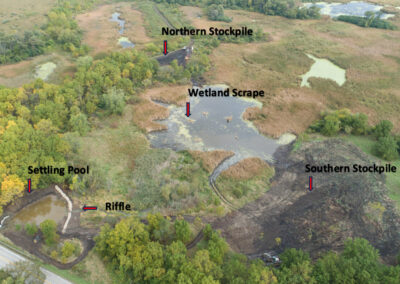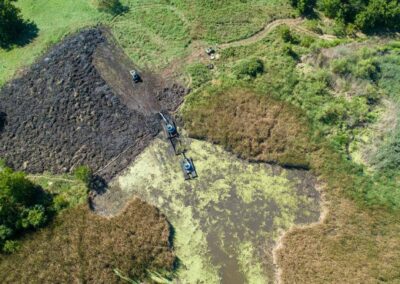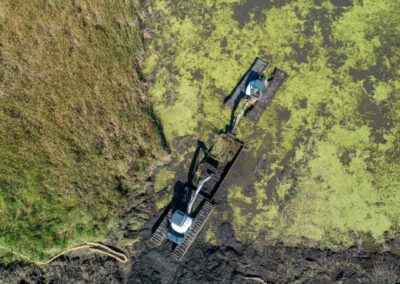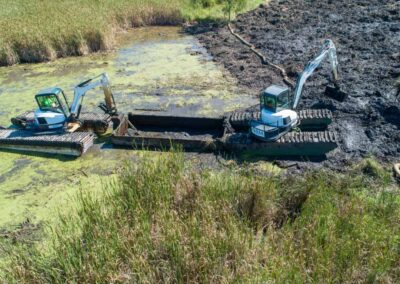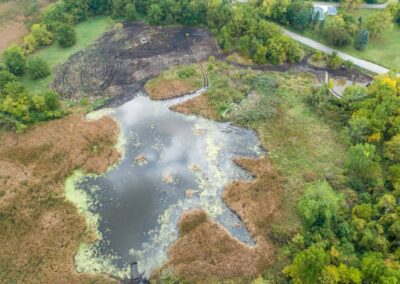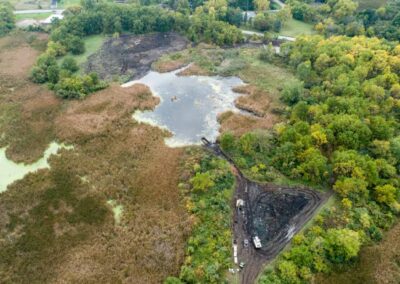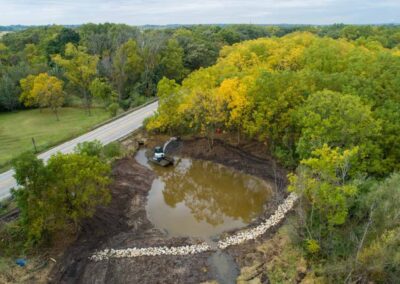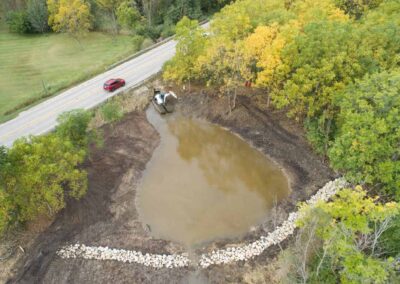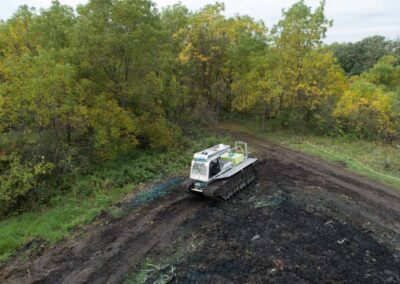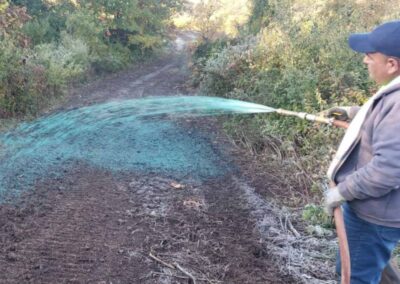PROJECT
PINGREE GROVE
Wetland Scrape
Location
Introduction
Details
This wetland scrape, performed in the summer of 2023, is one of five wetland scrape projects planned for this area. The resulting open water will benefit state-listed threatened species, such as yellow-headed blackbirds, waterfowl, and turtles, including the state-endangered Blandings turtle. Due to protections afforded to the Blandings turtles, ILM staff followed strict exclusion barriers, turtle detection, and escape protocols.
In preparation for the project, reed canary grass and common reed were chemically treated across the site. An obsolete berm and culvert were removed where water enters the marsh near Route 20. A small basin and riffle were created to capture silt and stabilize the location where water enters the marsh. ILM’s Ecological Construction team used amphibious and long-reach equipment to remove dense cattail growth, adding finger-like additions to serve as refuges for wildlife. The substrate was excavated to a maximum depth of three feet across a two-acre area in the southern section of the marsh. Deeper sections were dredged in the middle of open water to accommodate turtle hibernation.
Two spoil areas were designated for the material removed from the wetland. Material was first stockpiled, allowing for any turtles to escape before spreading. Upon completion of the project, the spoil areas were seeded with native seed and covered with erosion-control blanket.

